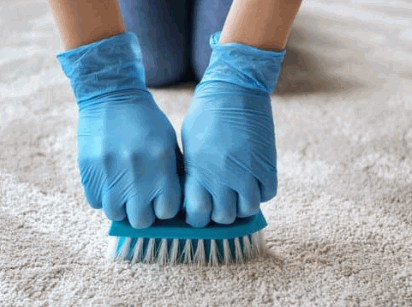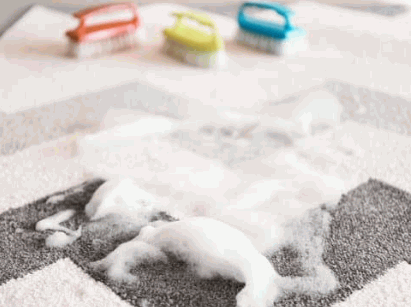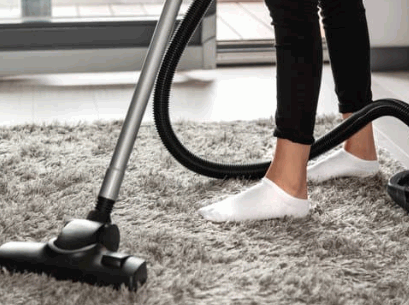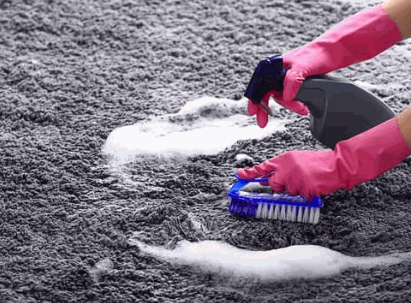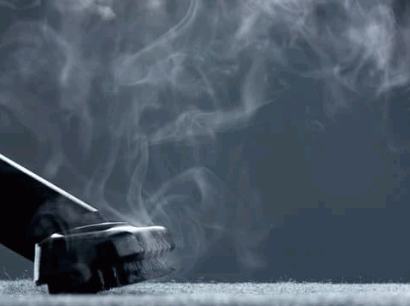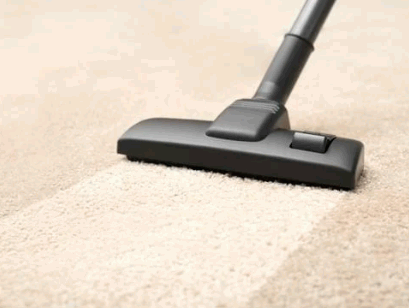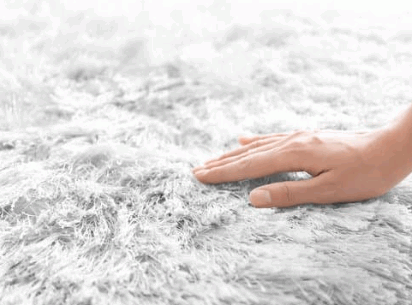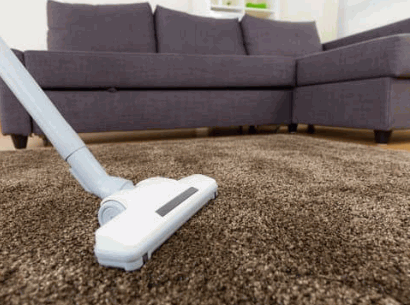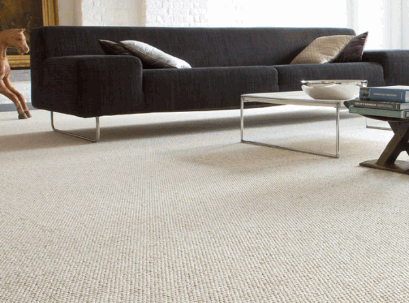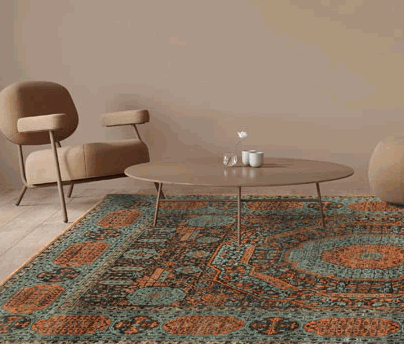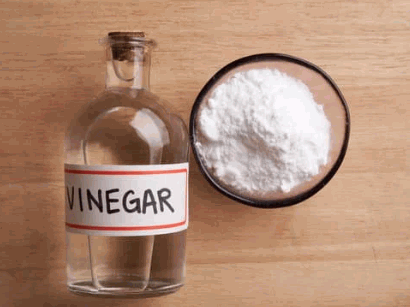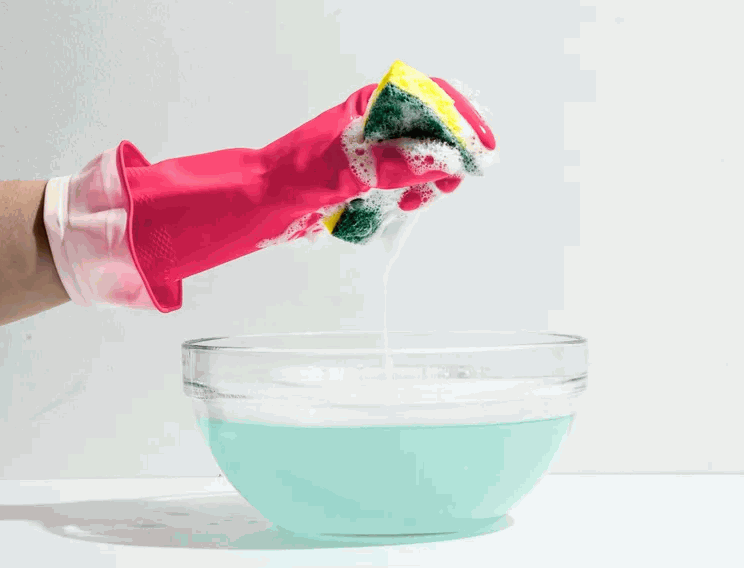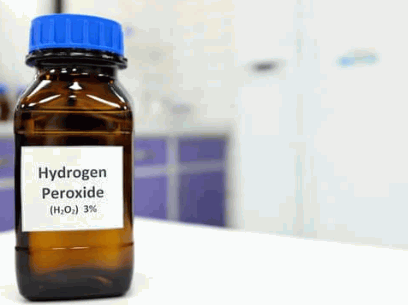Are you tired of living with dirty, stained carpets but don't want to spend a fortune on professional cleaning services? Look no further! In this article, we will share expert tips and tricks on how to clean your carpets at home, saving you time and money. Don't let dirty carpets be a cause of stress any longer.
Why Is It Important To Clean Carpets?
Regularly cleaning carpets is essential for several reasons. Firstly, carpets have a tendency to collect dirt, dust, and allergens over time, which can have a negative impact on the quality of indoor air and can even lead to respiratory issues. Secondly, frequent cleaning helps to remove stains and prevent permanent damage to the carpet fibers. Additionally, keeping carpets clean can prolong their lifespan, ultimately saving you money in the long term. Lastly, maintaining clean carpets enhances the overall appearance and hygiene of your home.
Pro-tip: Make sure to vacuum your carpets at least once a week to prevent the accumulation of dirt and debris.
What Are The Different Methods Of Cleaning Carpets?
Carpets are an essential part of any home, providing warmth and comfort to our living spaces. However, with regular use, they can quickly accumulate dirt, dust, and stains. In this section, we will discuss the various methods of cleaning carpets and their unique benefits. From the traditional method of vacuuming to the more advanced techniques of shampooing, steam cleaning, and dry cleaning, we will explore the different ways to keep your carpets looking fresh and clean. So, let's dive into the world of carpet cleaning and find the best method for your home.
1. Vacuuming
Vacuuming is an essential step in carpet cleaning to remove dirt, dust, and debris. Here are the steps to effectively vacuum your carpets:
- Prepare the area: Remove any obstacles or small items from the carpet.
- Select the right vacuum cleaner: Choose a vacuum with adjustable height settings and a brush roll suitable for your carpet type.
- Start from the edges: Begin vacuuming along the edges of the room, using the crevice tool to clean corners and baseboards.
- Vacuum in multiple directions: Move the vacuum back and forth in overlapping strokes to ensure thorough cleaning.
- Pay attention to high-traffic areas: Give extra attention to areas with heavy foot traffic, vacuuming them multiple times.
- Clean the vacuum regularly: Empty the dirt canister or change the bag frequently to maintain suction power.
- Finish with a final pass: After vacuuming the entire carpet, make a final pass to pick up any remaining dirt.
Regular vacuuming not only keeps your carpets clean but also helps prolong their lifespan. Remember to vacuum at least once a week or more frequently in high-traffic areas for optimal results.
2. Shampooing
Shampooing is a popular method for cleaning carpets and removing dirt, stains, and odors. Here are the steps involved in shampooing a carpet:
- Prepare the carpet by vacuuming it thoroughly to remove loose dirt and debris.
- Prepare the shampoo solution according to the manufacturer's instructions.
- Apply the shampoo solution to the carpet using a carpet cleaning machine or a brush.
- Work the shampoo into the carpet fibers using circular motions.
- Allow the shampoo to sit on the carpet for the recommended amount of time.
- Rinse the carpet thoroughly with clean water to remove the shampoo residue.
- Use a wet vacuum or towels to remove excess moisture from the carpet.
- Allow the carpet to dry completely before walking on it.
Shampooing is an effective method for deep cleaning carpets, but it is important to follow the instructions carefully and avoid over-wetting the carpet.
3. Steam Cleaning
Steam cleaning is a highly effective method for deep cleaning carpets, and removing dirt, allergens, and stains. Here are the steps involved in the steam cleaning process:
- Preparation: Begin by thoroughly vacuuming the carpet to remove any loose dirt and debris.
- Pre-treatment: Next, apply a pre-treatment solution to tackle stubborn stains and high-traffic areas.
- Steam cleaning machine setup: Fill the machine with water and the recommended cleaning solution.
- Steam cleaning process: Starting from one corner of the room, slowly move the machine in a back-and-forth motion, releasing steam and hot water onto the carpet.
- Extraction: As the machine works, it simultaneously extracts the water, dirt, and cleaning solution, leaving the carpet damp but not soaked.
- Drying: To speed up the drying process, open windows or turn on fans to promote quick drying of the carpet.
Steam cleaning provides a thorough and effective cleaning for carpets, leaving them fresh and revitalized.
4. Dry Cleaning
Dry cleaning is a popular method for cleaning carpets, especially those made of delicate or natural fibers. Here are the steps involved in the dry cleaning process:
- Preparation: Begin by vacuuming the carpet to remove any loose dirt and debris.
- Pre-treatment: Next, apply a dry cleaning solvent or powder to the carpet fibers.
- Agitation: Use a brush or carpet rake to work the solvent or powder into the carpet, ensuring thorough coverage.
- Waiting: Allow the solvent or powder to sit on the carpet for the recommended amount of time, following the instructions provided by the manufacturer.
- Extraction: Use a specialized dry cleaning machine to extract the solvent or powder from the carpet, along with any dirt and stains.
- Drying: Once the extraction is complete, allow the carpet to air dry completely before walking on it.
Pro-tip: For best results, always follow the manufacturer's instructions and consider hiring a professional for deep cleaning and tough stains.
What Are The Common Mistakes To Avoid When Cleaning Carpets?
Cleaning carpets at home can be a daunting task, especially if you are not aware of the common mistakes to avoid. In this section, we will discuss the most common mistakes people make when cleaning their carpets and how to avoid them. From using too much water to not pre-treating stains, we will explore the potential pitfalls and offer solutions to ensure a successful and efficient cleaning process. So, let's dive in and learn how to properly clean your carpets without making these mistakes.
1. Using Too Much Water
Using excessive amounts of water when cleaning carpets can result in various issues. To avoid this mistake, follow these steps:
- Prepare the carpet by vacuuming to remove any loose dirt and debris.
- Test a small, inconspicuous area with the cleaning solution to ensure it does not cause any damage.
- Follow the recommended dilution ratio for the cleaning solution.
- Apply the solution sparingly and evenly, using a misting or spraying technique.
- Use a clean, absorbent cloth or sponge to blot the carpet, absorbing any excess moisture.
- Allow the carpet to air dry completely before walking on it or replacing furniture.
- If necessary, use fans or open windows to help speed up the drying process.
2. Not Pre-treating Stains
Pre-treating stains before cleaning carpets is crucial in order to effectively remove stains and avoid damaging the carpet fibers. To properly pre-treat stains, follow these steps:
- Identify the stain: Determine the type of stain (e.g., food, pet urine, oil) to choose the appropriate pre-treatment solution.
- Blot the stain: Gently blot the stain with a clean cloth or paper towel to remove excess liquid or debris.
- Apply pre-treatment solution: Use a stain remover or a mixture of water and mild detergent to treat the stain. Apply the solution directly to the stained area.
- Let it sit: Allow the pre-treatment solution to sit on the stain for a few minutes to penetrate and break down the stain.
- Gently scrub: Use a soft brush or sponge to gently scrub the stained area in a circular motion, working from the outside edge of the stain towards the center.
- Blot again: Blot the treated area with a clean cloth or paper towel to absorb the loosened stain and solution.
- Rinse and dry: Rinse the area with clean water and blot dry with a towel.
Dig Deeper: How To Clean Red Wine From Carpet
3. Not Testing Cleaning Solutions
Not testing cleaning solutions before use can lead to damage or discoloration of carpets. To avoid this, follow these steps:
- Research: Understand the type of carpet and its cleaning requirements.
- Spot test: Apply a small amount of the cleaning solution on an inconspicuous area of the carpet.
- Observe: Check for any adverse reactions such as color fading or fiber damage.
- Wait: Allow the tested area to dry completely and assess the results.
- Proceed: If there are no negative effects, you can confidently use the cleaning solution on the rest of the carpet.
4. Not Using Proper Equipment
In order to achieve effective cleaning and avoid potential damage to carpet fibers, it is crucial to use proper equipment when cleaning carpets. Here are some essential tools to have on hand for successful carpet cleaning:
- Choose a high-quality vacuum cleaner with strong suction power to remove dirt, dust, and allergens from the carpet.
- Utilize a carpet cleaning machine specifically designed for deep cleaning carpets. These machines have rotating brushes and powerful water extraction capabilities.
- Use a carpet rake or brush to agitate the carpet fibers and evenly distribute cleaning solutions.
- Invest in a carpet cleaner with the necessary attachments for spot-cleaning stains and reaching difficult areas.
How To Clean Different Types Of Carpet?
Carpets come in many different types and materials, each requiring its own unique cleaning method. In this section, we will discuss how to clean different types of carpet, including wool, synthetic, Berber, and Oriental. By understanding the specific cleaning techniques for each type, you can ensure that your carpets are properly cared for and maintained. So, let's dive in and discover the best methods for keeping your carpets clean and looking like new.
1. Wool Carpets
- Vacuum the wool carpet regularly to remove dirt and debris.
- Blot spills immediately with a clean cloth or paper towel to prevent stains.
- Use a mild detergent mixed with water to gently clean the wool carpet surface.
- Gently scrub the stained area with a soft brush in a circular motion.
- Rinse the area with clean water and blot dry with a towel.
- Allow the wool carpet to air dries completely before walking on it.
Fun Fact: Wool carpets are naturally stain-resistant due to the structure of wool fibers, which have an outer layer that repels liquids.
2. Synthetic Carpets
Synthetic carpets are a common choice for their durability and affordability. When maintaining synthetic carpets, it's crucial to keep the following in mind:
- Regularly vacuum to eliminate dirt and debris.
- For stains and spills, use a mild carpet shampoo.
- For deep cleaning and tough stains, opt for steam cleaning.
- Be cautious of using excessive water as it can damage the carpet fibers.
Always refer to the manufacturer's guidelines for cleaning synthetic carpets to prolong their lifespan and preserve their appearance.
3. Berber Carpets
Berber carpets require special care due to their unique construction and delicate fibers. When cleaning Berber carpets, follow these steps:
- Start by vacuuming the carpet thoroughly to remove loose dirt and debris.
- Pre-treat any stains or spills by gently blotting them with a mixture of mild detergent and warm water.
- Use a low-moisture cleaning method, such as dry cleaning or encapsulation, to avoid over-wetting the Berber carpet.
- Avoid scrubbing or using harsh brushes that can damage the looped fibers.
- After cleaning, make sure the carpet is completely dry to prevent mold or mildew growth.
Proper maintenance and regular professional cleaning will help preserve the beauty and longevity of your Berber carpet. Be sure to refer to the manufacturer's guidelines for specific cleaning recommendations.
4. Oriental Carpets
Oriental carpets are delicate and require special care and attention when it comes to cleaning. Here are some important points to keep in mind:
- Vacuuming: Use a soft brush attachment to gently remove surface dirt and dust from the carpets.
- Spot cleaning: When treating stains on oriental carpets, it is important to be cautious. Test any cleaning solution in an inconspicuous area first to ensure it does not cause any damage.
- Professional cleaning: It is recommended to have oriental carpets professionally cleaned every 1-2 years to maintain their beauty and longevity.
Oriental carpets have a rich history dating back centuries, with intricate patterns and designs influenced by various cultures and regions. They were originally hand-woven by skilled artisans and were highly prized possessions. Today, they continue to be cherished for their beauty and craftsmanship.
What Are Some DIY Carpet Cleaning Solutions?
When it comes to keeping your carpets clean and fresh, hiring a professional cleaner can be expensive. Luckily, there are several DIY carpet cleaning solutions that you can easily make at home. In this section, we will discuss four different solutions that can effectively remove stains and odors from your carpets. From a simple baking soda and vinegar solution to a powerful hydrogen peroxide and dish soap solution, we've got you covered with some tried-and-tested methods to keep your carpets looking like new.
1. Baking Soda And Vinegar Solution
A solution of baking soda and vinegar is a natural and effective DIY method for cleaning carpets. Here's a step-by-step guide:
- Begin by removing any loose dirt or debris from the carpet.
- Sprinkle baking soda generously over the entire carpet.
- Mix equal parts white vinegar and water in a spray bottle.
- Spray the vinegar solution onto the carpet covered with baking soda.
- Gently scrub the carpet using a soft brush or sponge.
- Allow the solution to sit for 15-20 minutes to effectively penetrate and break down stains.
- Blot the carpet with a clean cloth or towel to remove the cleaning solution.
- Finally, vacuum the carpet to eliminate any remaining residue of baking soda.
Pro tip: To prevent discoloration of the carpet, it's important to first conduct a spot test on a small, inconspicuous area before applying the baking soda and vinegar solution to the entire carpet.
2. Dish Soap And Water Solution
The dish soap and water solution is a simple and effective method for cleaning carpets. Here are the steps to follow:
- Mix a solution of warm water and a few drops of dish soap.
- Using a clean cloth or sponge, gently blot the stained area with the Dish Soap and Water Solution.
- Continue blotting until the stain is lifted.
- Rinse the area with clean water to remove any soap residue.
- Blot the area with a dry cloth to remove excess moisture.
- Allow the carpet to air dry completely.
3. Club Soda And Salt Solution
The club soda and salt solution is a popular DIY carpet cleaning method that can effectively remove stains and odors. Here is a step-by-step guide on how to use this solution:
- Blot the stained area with a clean cloth or paper towel to remove any excess liquid or residue.
- Pour the Club Soda and Salt Solution directly onto the stain, ensuring it covers the entire area.
- Allow the solution to sit on the stain for a few minutes to penetrate and loosen the stain.
- While the solution is still wet, sprinkle a generous amount of salt over the stain.
- Gently rub the salt into the carpet fibers using a clean cloth or soft brush.
- Leave the salt on the stain for at least an hour or overnight to absorb the stain and moisture.
- Vacuum the area thoroughly to remove the dried salt and any remaining stain particles.
The Club Soda and Salt Solution is a simple and effective method for tackling common carpet stains, such as coffee spills or pet accidents.
4. Hydrogen Peroxide And Dish Soap Solution
To effectively clean your carpet using a solution of hydrogen peroxide and dish soap, simply follow these steps:
- Mix equal parts of hydrogen peroxide and dish soap in a spray bottle to create the cleaning solution.
- Start by vacuuming the carpet thoroughly to remove any loose dirt or debris.
- Before using the solution on the entire carpet, test it on a small, inconspicuous area to ensure it does not cause any discoloration.
- If the solution passes the colorfastness test, spray it onto the stained or soiled areas of the carpet.
- Using a clean cloth or sponge, gently blot the solution into the carpet.
- Let the solution sit on the carpet for 10-15 minutes to effectively loosen dirt or stains.
- Blot the area again with a clean cloth to remove the loosened debris or stain.
- Rinse the area with clean water and use a towel to blot it dry.
- Allow the carpet to air dry completely before walking on it again.
